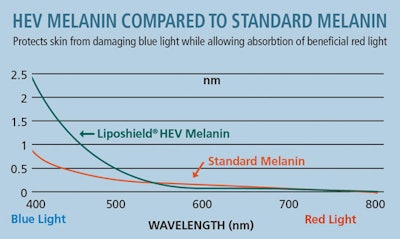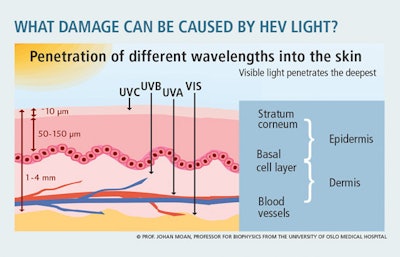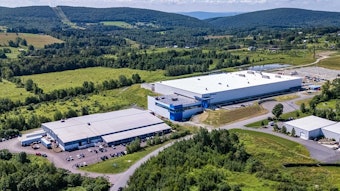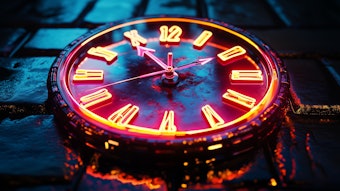
The Concept
Recent scientific evidence suggests that High Energy Visible (HEV) light at the wavelengths that the eye perceives as blue to violet is harmful to skin. HEV light has been shown to generate the same amount of reactive oxygen species (ROSs) in the skin as those produced by UVA and UVB combined.1 The exact impact of this ROS burst to normal biochemical cycles that maintain healthy skin is not fully understood.
Lipo Chemicals has conducted a study analyzing the changes in the skin’s gene expression when exposed to HEV light. This study’s results indicate that HEV light may significantly affect the skin’s inflammatory cascade and its progression to healing, barrier recovery, cell cycles and melanogenesis. The results may explain the variety of previously described effects of HEV light on skin and shed new light on the understanding of what is believed to be the harmful impact that leads to accelerated skin aging.
Our conclusion, based on this study and other research group’s studies, is that in order to maintain skin’s health the skin must be shielded from this wavelength. As a result, Lipo Chemicals has developed a novel, patent-pending compound that acts as an “umbrella” to shield the skin from HEV light, called Liposheild® HEV Melanin.
What is High Energy Visible Light?
High energy visible (HEV) light is a high frequency light in the blue/violet region with wavelengths from 400 to 500 nm.
While the public is highly educated regarding the dangers associated with excessive exposure to ultraviolet light in the UVA and UVB wavelengths, findings in recent years indicate that we have yet to explore the full spectrum of adverse effects related to sun exposure. One of the more striking scientific discoveries is that skin damage caused by high energy visible light may be as harmful as the damage caused by UVA and UVB light combined.
What Damage Can Be Caused By HEV Light?
Like UVA, HEV light may be another silent, long-term aging wavelength. It does not generate the immediate erythema or edema reactions triggered by UVB, but it may induce carcinogenesis and accelerated photoaging.2 While the effect of UVB radiation is associated with direct damage to the DNA, the cellular damage caused by HEV radiation is less direct and is associated with the generation of free radicals and the induction of oxidative stress. HEV is most likely absorbed by endogenous non-DNA chromophores in the skin, a process that leads to the generation of photo-sensitization mediators. In their photo-excited state these intermediates exert damage by directly reacting with substrate molecules, including DNA bases or molecular oxygen leading to ROS formation.
Gene Expression Study
Lipo Chemicals has performed a PCR gene expression study to determine the changes induced by exposure to HEV light. From the results we have hypothesized that HEV light may affect the skin’s inflammatory cascade and its progression to healing, barrier recovery, cell cycles and melanogenesis.
Cultures of artificial skin composed of human cells were exposed to HEV light from light boxes under monitored conditions equivalent to six hours of exposure to sunlight. Control cultures were incubated in the dark. Gene expression data were normalized to control so unrelated variations that result from gene aging and other effects are eliminated.
To test the shielding effect of Liposhield® HEV Melanin, a film of the product was painted on the plastic lids covering the cultures prior to irradiation.
Our study revealed that that HEV light affected 90 genes. After filtering of those genes that were not relevant to the skin, 40 genes were identified that were either up-regulated or down-regulated by the HEV light exposure. These genes coded for proteins involved with various processes such as inflammation, healing, barrier repair and melanogenisis. Based on the various genes affected, we have developed hypotheses about how the skin is damaged by HEV light.
Based on our results, it is possible that HEV light induces inflammation, but because of the immense amount of free radicals generated, antioxidants present naturally in the skin are consumed, preventing the progression of inflammation to healing. It is this attenuation of the healing process the keeps more cells in cell senescence, thus leading to overall skin aging.
In addition to the possible attenuation of the healing process and weak skin barrier functioning, it was found that exposure to HEV light changed the expression of several genes that point towards uneven pigmentation. This generation of uneven pigmentation may result from interference in the melanogenesis cascade at the cellular, enzymatic and substrate levels.
What is Liposhield HEV Melanin?
Liposhield® HEV Melanin is a fractionated melanin compound, designed to be used topically as a defense against the damage caused by high energy visible light. It was designed to absorb more strongly than natural melanin in the blue-violet region of the visible light spectrum in order to shield the skin from HEV light. This novel, patent-pending ingredient may help to prevent premature aging and hyperpigmentation. It has a molecular weight of 5,000–10,000 Daltons and will not penetrate healthy, intact skin. It can be incorporated into formulations in a pleasing aesthetic manner. The structural differences between a standard melanin and the Liposhield® HEV Melanin and a comparison of their absorption spectra is illustrated here.
How Does Liposhield HEV Melanin Work?
Liposhield® HEV Melanin acts by absorbing high energy visible light.
As reported above, our gene expression study showed an activation of 40 skin genes when exposed to HEV light. These changes were completely prevented in 39 of the 40 genes when the skin was protected by Liposhield® HEV Melanin. The only gene still affected was for heat shock protein, probably due to the high temperature lights used in the study.
Conclusion
Lipo Chemicals' gene expression study, as well as other studies reported in the literature, show that high energy visible light is responsible for significant damaging and aging of the skin. Our study showed that the gene effects can be completely prevented with the use of Liposhield® HEV Melanin.
References
- L Zastrow, N Groth, F Klein, D Kockott, J Lademann, and L Ferrero, Detection and identification of free radicals generated by UV and visible light in Ex Vivo human skin, IFSCC Magazine, 11(3), 297–315 (2008)
- A Besaratinia, SI Kim, and GP Pfeifer, Rapid repair of UVA induced oxidized purines and persistence of UVB induced dipyrimide lesions determine the mutagenicity of sun light in mouse cells, The FASEB Journal, 22, 2379–2392 (2008)
Disclaimer:
The above paid-for content was produced by and posted on behalf of the Sponsor. Content provided is generated solely by the Sponsor or its affiliates, and it is the Sponsor’s responsibility for the accuracy, completeness and validity of all information included. Global Cosmetic Industry takes steps to ensure that you will not confuse sponsored content with content produced by Global Cosmetic Industry and governed by its editorial policy.













